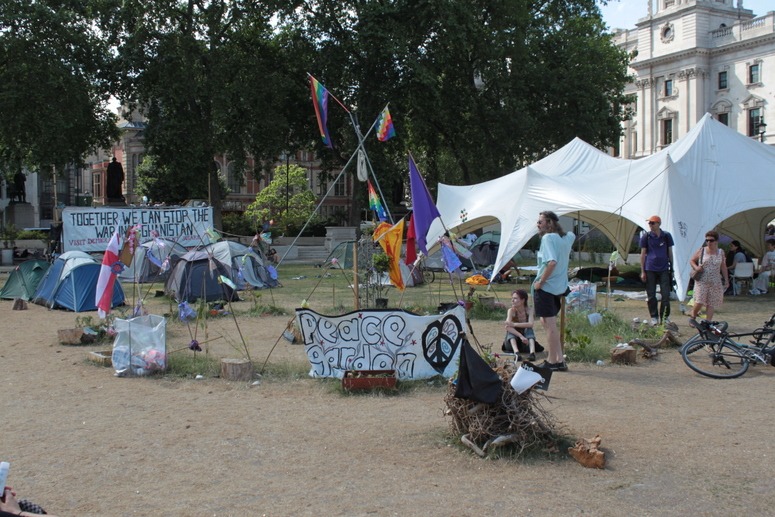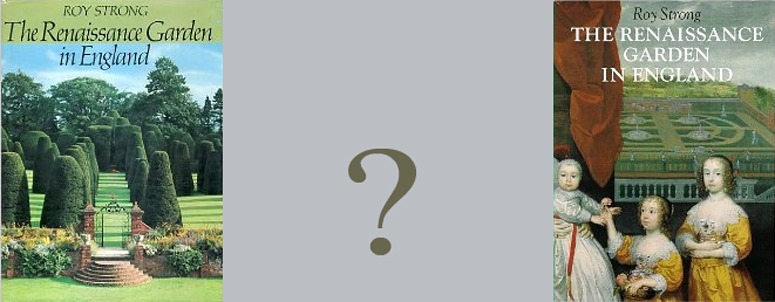OK, it’s a mess.
But what should a ‘Parliament Square’ be used for? Parliament-related activities, obviously.
London’s Parliament Square is a traffic island. When not being used for protests, it is empty.
So why not designate Parliament Square as an area for political activity. The activity should be orderly, as in the Houses of Parliament, but there should be free speech, as in the Houses of Parliament. And there should be an Outdoor Speaker to give varied political groups chances to express their views.
We have had years of talk about pedestrianizing Parliament Square – and I favour the idea. But I don’t want the Square to become a sales venue for international coffee chains. Relating the use of outdoor space to the use of adjacent indoor space is often a good principle and this is a wonderful place to put it to the test.
The above photograph, taken today, is of the Peace Garden and Democracy Village in Parliament Square. The protest began on 1st May and the Mayor of London won a court injunction to get it removed last week. An appeal is expected and then the tents are likely to be removed. The handsome statue brooding over the scene is of Benjamin Disraeli. He is famous for his wit, for extending the franchise and for making Queen Victoria the Empress of India. What would he think of the current Afghan War and the protest? I guess he would be against the war, on pragramatic grounds, and against the protest, because it is a mess. But if it could be an orderly Garden Protest, I think he would regard it as an enrichment of our democracy, as would I.
The below photograph, also taken today, shows that London’s police force is a much more liberal institution than it used to be. Multi-everything is the new political correctness.
Monthly Archives: July 2010
The Renaissance Garden in England by Sir Roy Strong – book review
I have been slow to review this book – the hardback (left) was published in 1979. The paperback (right) was published in 1998 with a statement from the author that ‘I intend to rework the whole subject, incorporating all that has happened in the last twenty years’. So my comments may be of use to the author.
(1) Put dates on the front cover
The present title may be compared to a book on The Great War in which you have to read half the first chapter to discover that it is really a book on The Great War 1914-16. Strong writes on page 13: ‘In this book I am only going to take one period and one thread. The period stretches from the accession of Henry VIII (1509) to the outbreak of the Civil War in 1642 and the thread is the evolution, design and meaning of the palace and the great garden’.
(2) Revise the book to include the century from until 1642-1742 (or more)
This is when Renaissance ideas had most influence on English gardens – as shown by Kip and Knyff’s topographic drawings. One could be disappointed in a book on The Second World War which only covered the period from September 1939 to the fall of France on 22 June 1940. As Kip and Knyff show in Britannia Illustrata, English gardens in 1707 were much more ‘Renaissance’ than ‘Baroque’. They had aignificant ‘Baroque’ aspect but it was never dominant. The avenues in the Kip and Kynff drawings half-hearted additions to fundamentally High Renaissance plans.
(3) Prefer the cover of the paperback edition, despite its parenticidal cropping (see the original)
As Roy Strong notes, on page 211, the garden of Packwood House (as used on the cover of the 1979 hardback edition) is ‘long famous as a garden planted in the 1660s, it was in fact, a mid-Victorian re-creation’. Apart from the question of it being a highly dubious ‘re-creation’, even the original is outside Roy Strong’s period
(4) Remove the book’s silly dedication
It reads ‘IN MEMORY OF ALL THOSE GARDENS DESTROYED BY CAPABILITY BROWN AND HIS SUCCESSORS’. The most significant Renaissance gardens discussed by Roy Strong are Hampton Court, Whitehall, Nonsuch, Kenilworth, Theobalds, Wollaton, Wimbledon, Richmond. Hatfield, Ham House, Worcester Lodge, Dowsby, Northampton House, Twickenham, Chastleton House, Gorehambury, Moor Park Herts, Wilton, Arundel House, Danvers House. A little historical investigation, aided by a pocket calculator, could reveal that >10% of these gardens fell victim to the landscape movement.



